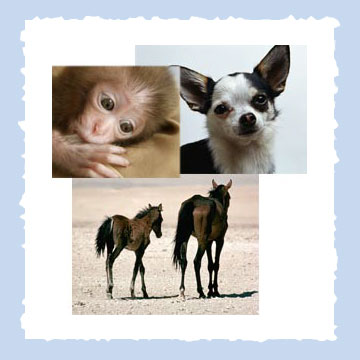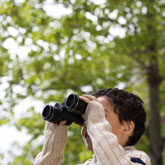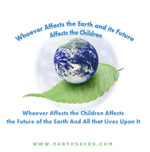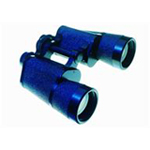|
Kids Can... Help the Animals!
Animals need your help! Whether you're talking about wild animals whose habitats are endangered, farm animals suffering overcrowding on a factory-style farm, wild horses in need of rescue, the homeless pets at your local animal shelter, or the animals in your own home or yard... animals really need your help. There are many different things you can do to help animals, from volunteering your time to changing the way you live. But one of the greatest things you can do each day is to learn more about them and what they need. Unlike you, animals cannot write their elected representative, or start a petition, or publicize their problems on Facebook. They need you - your voice, your time, your creative insight into what could help and how it could get done. So the more you learn about animals and the issues that affect animals, the more you can help them. Below you will find some of our ideas for issues to learn about and ways to help:
Help out at your local animal shelter
Donate to a group that is working to preserve an endangered species
Adopt an animal -- either in real life, or
by donating money on its behalf
Volunteer at a local wildlife preserve
Teach others about animal issues
Buy eggs, dairy, or meat from farms that practice "free range" techniques.
Buy Organic Foods You may already know that organic foods are those that are grown or raised without the use of potentially harmful chemical products like artificial fertilizers or antibiotics and that many believe these are the tastiest and healthiest foods to eat. But did you also know that sustainable organic farming is best for animals too? Animals raised on healthy organic feed and allowed to roam in the fresh air in safe, sanitary conditions don't need daily doses of antibiotics. So organic ranchers are more invested in the humane treatment of livestock. And organic farmers who use natural methods to grow their crops and nourish their soil are helping humans and wildlife alike by abstaining from the use of harsh pesticides or artificial fertilizers that often ends leaves toxic residues in our water supply. What's more the recent mass die offs of important pollinators like bees and butterflies has been tied to pesticide use. Fertilizer run off is just one of many nonpoint source pollutants that have been tied to frog and fish deformities. Every time you buy organic food you are helping both farm animals and wildlife. You are also helping sustainable food producers stay in business. And because all growers depend on the money that comes from you the consumer, you are sending a powerful message to those use outdated, toxic, and inhumane methods of food production that you want them to change. Learn more: Food and Agriculture: Toward Healthy Food and Farms
Say "NO" to GMO There's a great deal of debate these days about the value and risk of genetically modified food organisms (GMO). Some scientists claim that tinkering with the DNA of plants and animals is a smart way to create just what we want in terms of plant/animal health and even taste. But other scientists point out that even with all we've learned about DNA we still know very little about the long range effects of such tinkering -- both on the environment, on the species being modified, and on the human bodies consuming GMO foods. Plus many folks fear that GMO foods will be handled in much the same way as chemical food additives have been. That is, government officials have often been too quick to give the "okay" to adding some new artificial concoction to our food or medicine...only to find out later that it causes cancer, birth defects, or some other hazard. In a similar way, many chemicals and other substances, that were once thought "safe" to use in farming and industry have since been discovered to poison the air, soil, or water...as well as humans and wildlife. The resultant suffering and loss of life would suggest that it would have been better if more time was taken to study the safety of these substances before giving approval for their use. But what is different about the GMO threat is that once the genetically engineered plants and animals (including fish) have escaped into the wild and crossbred with wild stock...there may be no stopping the spread of the modified genes. Ever. And what if we discover a problem 10 or 20 years from now with those modified genes? How will we undo the damage? It's literally like trying to stuff a genie back into a bottle. Besides the threat to human beings, the use of genetically modified plants and animals threatens wild animal species whose food supply and breeding populations may become contaminated. GMO researchers and manufactures claim they have engineered-in ways to stop their plants and animals from reproducing in the wild, but there is already data suggesting that this has failed with some plant crops and could likely fail with at least some animal crops, such as genetically engineered salmon. Should we expect something different with genetically modified animals? And lastly, there are ethical considerations to the research being done on animals, including experiments that cause the body parts of one species to grow on, or in, another - including human body parts. In short, just because we can do something, does that mean we should do it? To learn more, read: Tiki's Guide to Genetic Engineering (kid friendly) Impacts of Genetic Engineering The First GMO Animal Built for Human Consumption
Grow Your Own Food If you're like most people, you probably don't' have the room to grow all the food you need. Some experts estimate an acre of land per person in required, depending on your diet (includes meat production). Nonetheless, you can still grow quite a bit of food in a small amount of space! Beans, squash, tomatoes, carrots, and salad greens can all easily be grown in the home garden - even if all you have to plant in is large containers. But how does growing your own food help animals? Easy! Growing your own food means you get to control how it is grown -- organic, without pesticides, artificial fertilizers, and without water wasting - all good for the environment and wildlife. Plus, many plants you grow in the home garden provide bees and other pollinators with food. Next consider this: what if more people grew food instead of lawns? For one thing it would mean less wild open spaces would need to be plowed under and re-developed to feed people. It would also means less fossil fuels would be required for food transportation, saving animal habitats from the destruction associated with drilling, mining, and fracking. (As a side benefit it might also mean a more secure food supply for your local community as the price of fuel, and thus transported food, increases.) And finally, spending time in your own garden may increase your awareness and appreciation of nature...making you more willing to take other actions that benefit wildlife.
Protect Honey Bees and Other Pollinators If you've spent much time in a healthy organic garden you've probably noticed bees buzzing from flower to flower. The bees are busy collecting nectar from each flower to take back and share with the hive. But in the process they are also moving pollen from one plant to another. This process, called pollination, is vital to many of the fruits, vegetables, and flowers that we love and that farmers depend on for their income. Clearly pollinators, including honey bees, wild bees, and butterflies, are very important and very helpful. But there are a lot of bugs that humans don't like. So many people, including farmers, spray pesticides to kill off the bugs that they consider "pests". But pesticides are basically poisons. And many if not most of these poisons can build up over time in our bodies and in the environment. They can have powerful effects that are often hidden and hard to detect until many years have passed. One such hidden effect that has recently become more obvious, thanks to scientific studies, is the fact that pesticides have been making honey bees and other pollinators sick. Scientists say that the cumulative effect of bees carrying these poisons back to the hive, along with the pollen and nectar they collect, has lead to a weakening and sickening of many hives. The affected hives becomes increasingly more susceptible to disease until suddenly the entire hive dies. The concern is that this trend will continue or even worsen, possibly wiping out honey bees entirely. Worse still, honey bees are not the only pollinators experiencing drastic die offs. Many other pollinating insects have been experiencing dramatic reductions in their populations due to pesticide use and other factors. While all this is bad news for pollinating insects it turns out its also bad news for humans too. Farmers depend on bees and other pollinators for the health and abundance of many of their crops. In fact, pollinators are so important that some scientists believe we could see world wide food shortages and famine if we don't do something to stop the die off of honey bees, butterflies, wild bees, and other pollinators. Now, it's important to know that many of the grains we depend on for our breads and cereals do not need pollination from bees or other creatures. And it is possible for humans to hand pollinate many crops that depend on bees, although it is extremely expensive to do so. However, our supplies of affordable fruits, nuts, oils, and many other plants would be severely impacted. And as we all know, a healthy diet depends on eating a variety of foods from all the food groups. In short, helping bees and other pollinators will help us as well. But what, you ask, can we do? First off, talk to your parents about the pesticides you use at home. Make it a family project to review your use of these products and discuss what you can do to eliminate or at least drastically reduce your use of pesticides. Learn ways to deal with unwanted bugs without poison. Cut back or eliminate your use of weedkillers too as pollinators may be sensitive to the cumulative toxins absorbed from these sources. Next consider planting fruits, flowers, and vegetables that are appealing to pollinators. Talk to friends and family about this issue so that as many people as possible can become informed about this issue. Encourage them to write letters, make phone calls, and sign petitions asking our legislators to outlaw those toxins that have already been scientifically proven to be harmful to pollinators.
Learn how to promote kindness to animals
The oceans need our help! Pollution, global warming, overfishing by humans -- all are taking their toll on the delicate webs of life in our oceans. Learn more on the EK Marine Science page, including ways you can take action to support our seas.
Learn about Wetlands & Pond Life Ponds & wetlands play a valuable role in the health of our communities and our world. Learn how you can help thrive.
Links
25 Things You Can Do
B.L.M.'s National Wild Horse & Burro Page
Defenders of Wildlife is dedicated to the protection of all native wild animals and plants in their natural communities. We focus our programs on what scientists consider two of the most serious environmental threats to the planet: the accelerating rate of extinction of species and the associated loss of biological diversity, and habitat alteration and destruction. Long known for our leadership on endangered species issues, Defenders of Wildlife also advocates new approaches to wildlife conservation that will help keep species from becoming endangered.
Help continue Dian Fossey's legendary work to save the mountain gorilla. Adopt your own gorilla and be a long distance gorilla foster parent. You will get a special profile on your gorilla and a framed photo. Visit the site to learn more or to learn what else you can do to help these very special animals. (Be sure to visit the Gorilla Foundation web site for even more about gorillas.)
This site by the American Museum of Natural History presents an online exhibition showing various endangered animals, the reasons for the problem, an informative fact sheet on each animal species, as well as some fun pages with legends and coloring. There's even information on endangered habitats, such as coral reefs, the Olympic Peninsula, Madagascar, and the Kapuas River region of Borneo.
Premier sea otter advocacy organization. Sea otter word search.
Humane Society of the United States Check out this site to learn more about important issues for animals, including: ending the fur industry, improving conditions for farm animals, research on animals, puppy "mills", and more. Surf their site to find information about how you can help change the laws so that they better protect animals! The HSUS is the nation's largest animal protection organization with more than seven million members and constituents. The HSUS is a mainstream voice for animals, with active programs in companion animals, wildlife and habitat protection, animals in research, and farm animals. The HSUS protects all animals through legislation, litigation, investigation, education, advocacy and field work. A non-profit organization, The HSUS celebrated its 50th anniversary in 2004, is based in Washington, D.C. and has seven regional offices across the country. Learn how the HSUS is connected to your local Humane Society!
Mission: Humane is a nationwide group of young people working to help animals where they need it most. You can be part of it, too! Do the projects they suggest and get fun rewards for taking action! Each year, one KIND Kid Award winner is selected to receive $100. Four runners-up are awarded $50 each. The deadline for entering is January 15, and winners are notified on or around February 15
Without a healthy natural habitat in which to live, wild animals are doomed to extinction or a life in a zoo. The Sierra Cub, founded in 1892, has been working to preserve natural habitat and ensure its health for more than 100 years. There experience and familiar name has made them into a powerful advocacy organization for the wild. Visit their home page and find out what action they are working on right now, and what you can do to help and become better informed.
Threatened, Endangered, And Depleted Seals And Sea Lions
World Wildlife Fund for Nature
Caring for Injured Wildlife...
Remember, wild animals like being wild -- don't try to keep an injured animal as a pet unless you know for certain that it could not be safely released back into the wild. Also, keep in mind that some injured animals can be dangerous! To an injured animal, you seem like a threat. They may bite, claw, or otherwise signal you to keep your distance if you try to pick them up. Many types of wild animals, including birds, simply die when people try to adopt them. (Or turn out to be much more trouble than anticipated!) If you find a wild animal that is injured or seems lost, call your local Humane Society for information, or check out these sources for more information:
|
on this page
Kids Can...
Giving Service
Taking a Stand Against
Taking A Spiritual
Empowering Children
MORE Fun &
Learning
|










